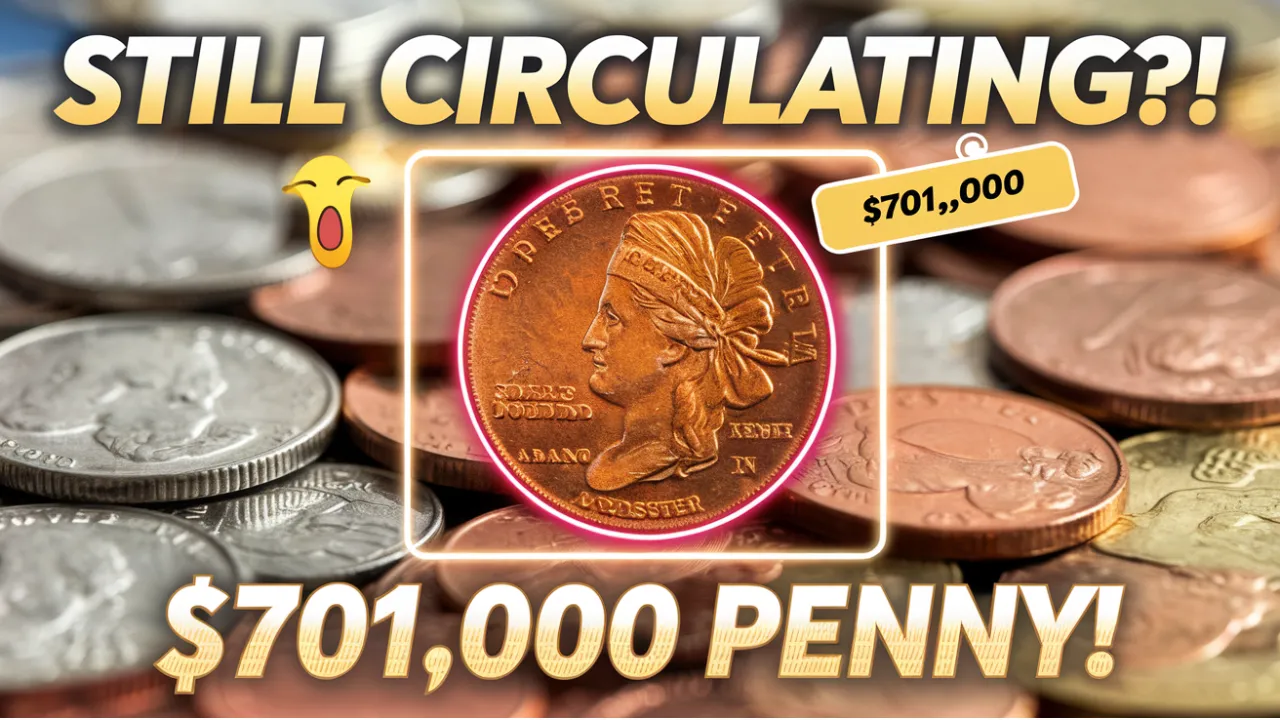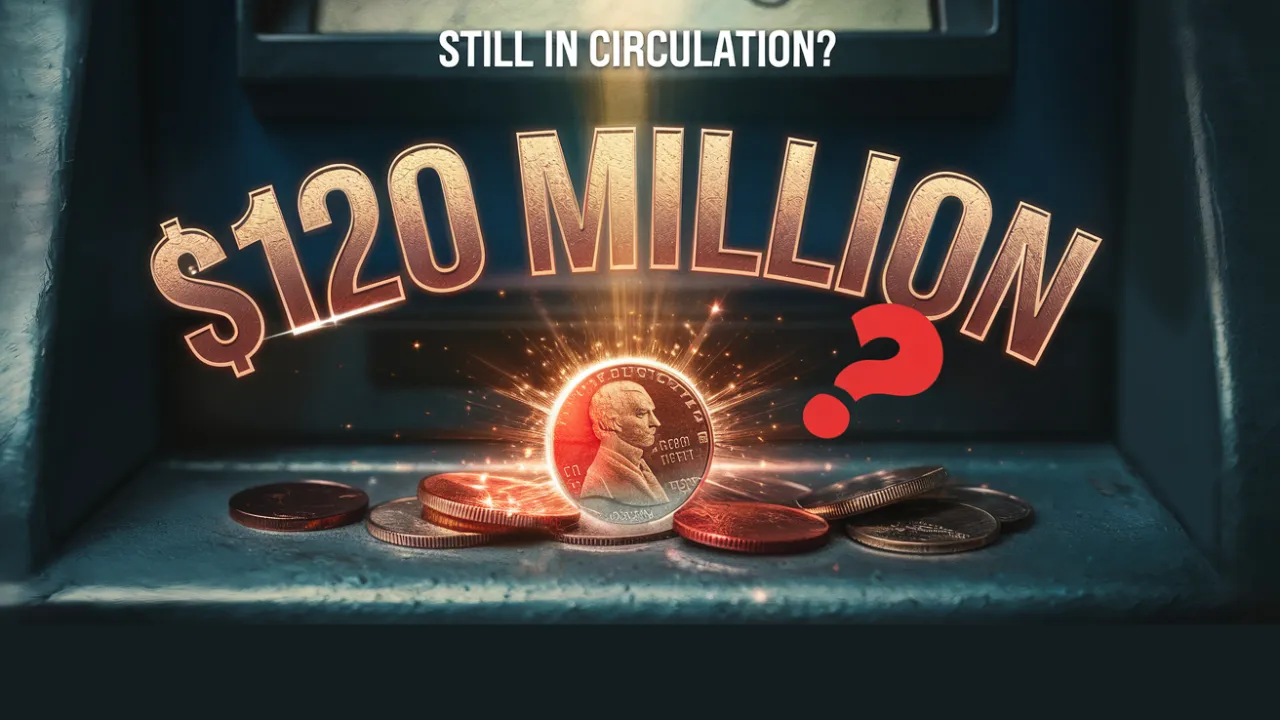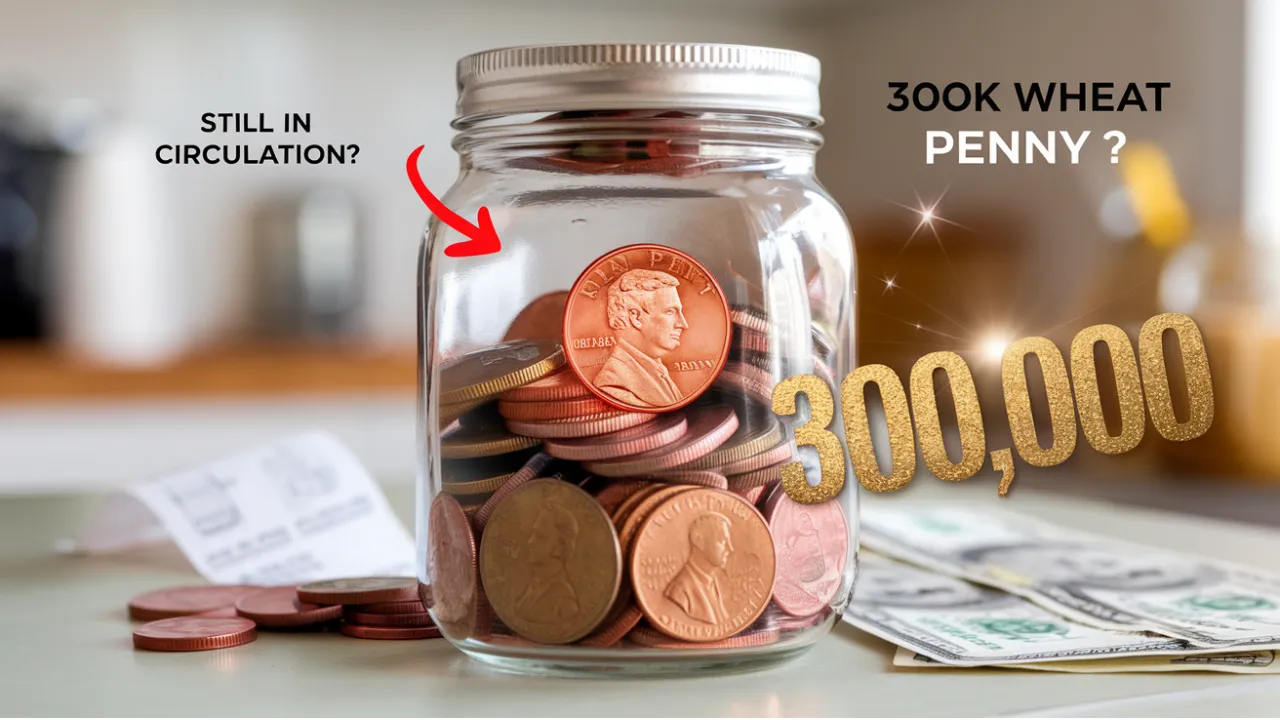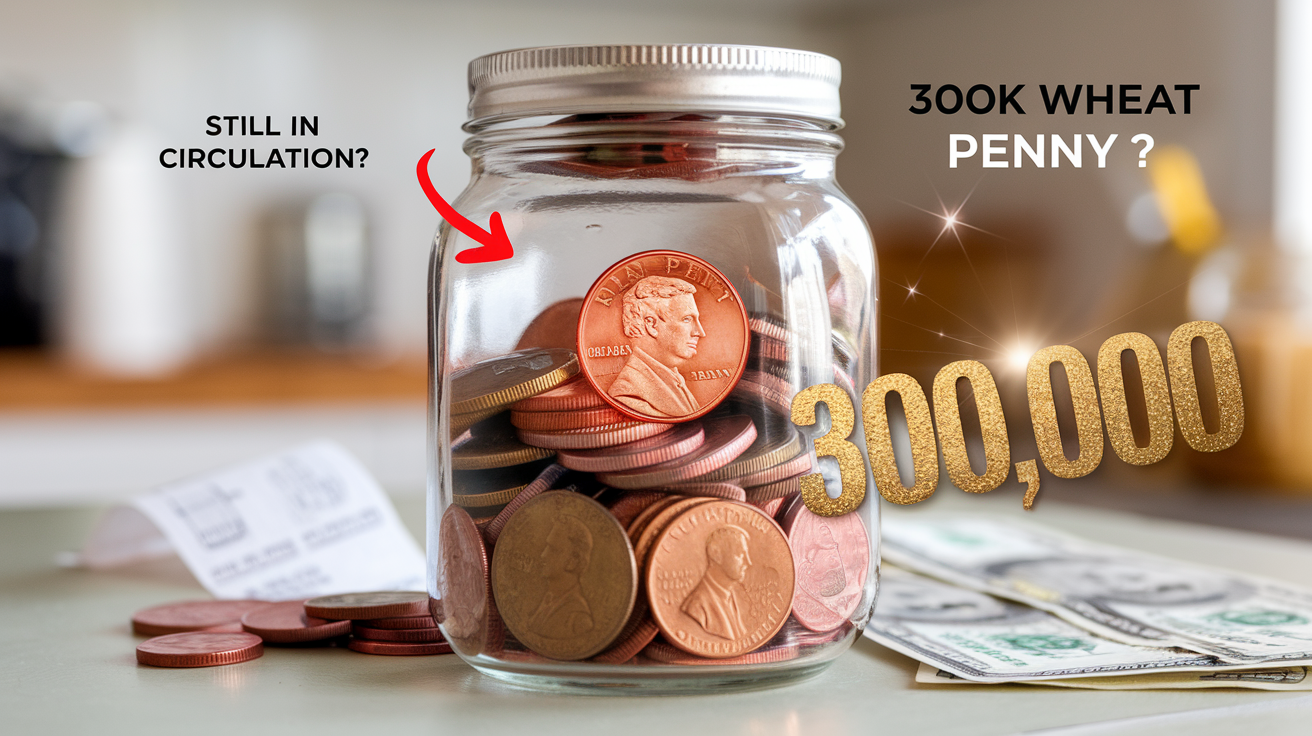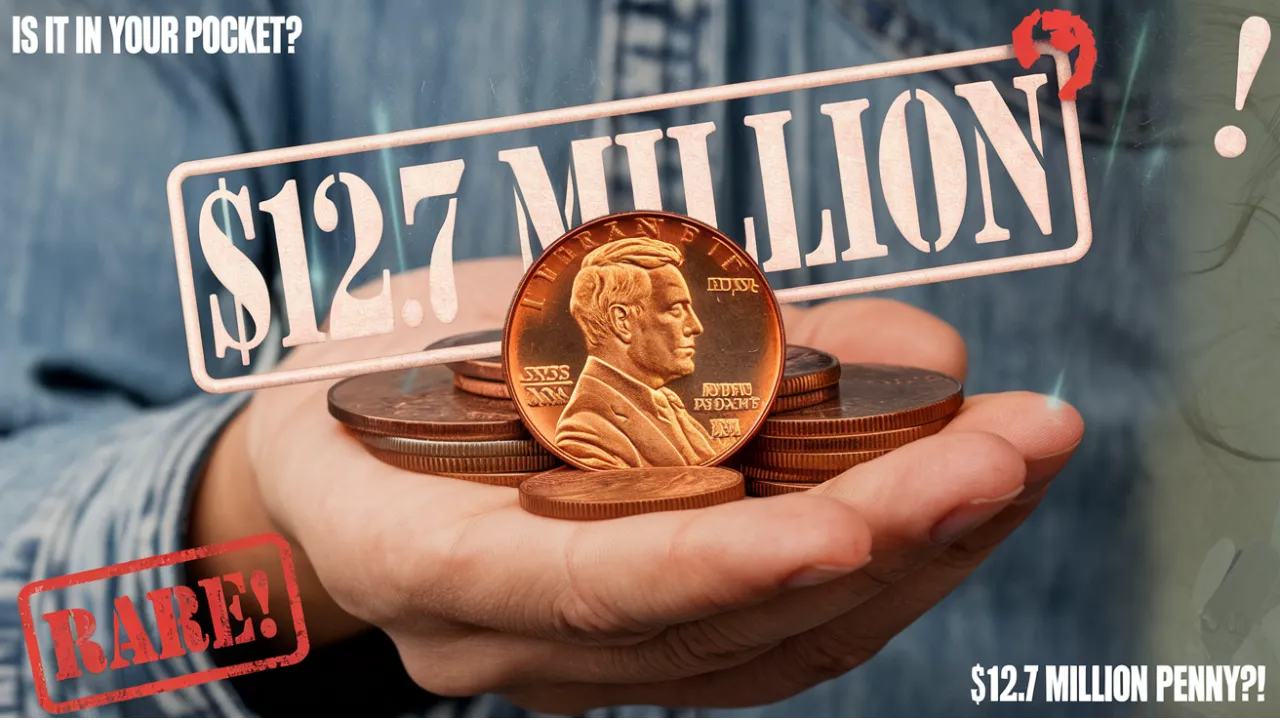The Lincoln Wheat Penny Valued at $701,000: The Lincoln Wheat Penny is more than just a piece of currency—it’s a potential treasure hidden in plain sight. Among these historic coins, a rare 1943 copper version has captured the attention of collectors worldwide due to its extraordinary value of $701,000. This penny, minted by accident during World War II, is highly sought after because of its unique copper composition. But what makes this coin so valuable, and could it still be found in everyday circulation? Let’s explore the fascinating story behind this rare coin and how you might identify one.
This article covers the history of the Lincoln Wheat Penny, explains why the 1943 copper version is so valuable, and provides practical tips for identifying and handling this rare find. We’ll also discuss how this coin might still be circulating and what steps to take if you believe you’ve discovered one.
Overview of the Lincoln Wheat Penny
| Key Details | Information |
| Coin Name | Lincoln Wheat Penny |
| Years Minted | 1909 – 1958 |
| Most Valuable Version | 1943 Copper Lincoln Wheat Penny |
| Reason for Rarity | Accidental copper minting during World War II |
| Estimated Value | Up to $701,000 |
| Standard 1943 Composition | Steel with zinc coating |
| Rare 1943 Composition | Copper (weighs 3.11 grams) |
| Mint Marks | No mark (Philadelphia), D (Denver), S (San Francisco) |
| Possibility of Still Being in Circulation | Extremely rare, but possible |
What is a Lincoln Wheat Penny?
The Lincoln Wheat Penny is a historic U.S. coin that was minted from 1909 to 1958. Featuring President Abraham Lincoln on the front and two wheat stalks on the back, this coin symbolized prosperity and became a beloved part of American currency. It replaced the Indian Head Penny and remained in use for nearly five decades.
In 1959, the design was updated to feature the Lincoln Memorial on the reverse, marking the end of the Wheat Penny era. Despite this change, the original Wheat Penny continues to hold significant value, especially rare versions like the 1943 copper Lincoln Wheat Penny, which is considered a collector’s dream due to its rarity and historical significance.
Why Is the 1943 Copper Lincoln Wheat Penny So Valuable?
During World War II, copper was a crucial resource needed for military equipment, leading the U.S. Mint to produce pennies using steel coated with zinc in 1943. However, a few copper blanks from the previous year were accidentally used during the minting process, resulting in the rare 1943 copper Lincoln Wheat Penny.
This mistake created one of the most sought-after error coins in history. Unlike the standard steel pennies, the copper version stands out for its reddish-brown color and heavier weight. Due to its rarity, collectors are willing to pay substantial amounts to own one. In fact, one of these copper pennies sold for a record-breaking $701,000, making it one of the most valuable coins ever minted in the United States.
How Could This Coin Still Be in Circulation?
Although most 1943 copper Lincoln Wheat Pennies have been removed from circulation and are now in private collections, it’s still possible that a few remain undiscovered. Since these pennies were released into circulation alongside regular steel pennies, some may have been spent or overlooked due to their similarity to other copper coins.
However, identifying one in circulation can be challenging due to its age and potential wear. After decades of use, a copper penny from 1943 may appear worn or tarnished, making it harder to distinguish from other pennies. Still, the distinct reddish-brown color and slightly heavier weight are key indicators that can help you spot this rare coin.
How to Identify a 1943 Copper Penny
If you think you’ve found a 1943 copper Lincoln Wheat Penny, use these methods to confirm its authenticity:
- Examine the Color: Copper pennies have a reddish-brown hue, unlike the silver-colored steel pennies.
- Check the Weight: Copper pennies weigh 3.11 grams, compared to 2.7 grams for steel pennies. Use a digital scale for precise measurements.
- Look for the Mint Mark: The mint mark is located near the date. Copper versions were minted in Philadelphia (no mint mark), Denver (D), and San Francisco (S), with the Philadelphia mint producing most of these rare coins.
- Assess the Condition: Coins in better condition are more valuable. Look for minimal scratches and clear details.
If your penny matches these characteristics, you may have discovered a valuable piece of history.
What to Do If You Find a Rare 1943 Copper Penny
If you believe you’ve found a 1943 copper Lincoln Wheat Penny, handle it carefully to avoid damaging the coin. Place it in a protective case and avoid cleaning it, as this can reduce its value. The next step is to have the coin professionally appraised by a numismatist or reputable coin dealer to verify its authenticity and determine its value.
When selling a rare coin, consider using reputable online marketplaces, certified coin dealers, or numismatic auctions. Thorough research is essential to ensure you’re dealing with trustworthy buyers and receiving the best possible price for your valuable coin. Even a penny in average condition can be worth thousands of dollars, while one in excellent condition could fetch hundreds of thousands.
Other Valuable Lincoln Wheat Pennies
While the 1943 copper Lincoln Wheat Penny is the most valuable, other Wheat Pennies are also highly sought after by collectors. Here are a few to watch for:
- 1909-S VDB Penny: Featuring the initials of designer Victor David Brenner, this penny is rare due to its limited mintage.
- 1914-D Penny: Produced in Denver, this penny’s low mintage makes it a prized collectible.
- 1922 No D Penny: Minted without the “D” mint mark, this error coin is highly valuable.
These coins can fetch significant prices depending on their condition and demand among collectors.
FAQs
1. How much is a 1943 copper Lincoln Wheat Penny worth?
A 1943 copper Lincoln Wheat Penny can be worth up to $701,000, depending on its condition and rarity.
2. Why were most 1943 pennies made of steel?
During World War II, copper was reserved for military use, so the U.S. Mint produced pennies using steel coated with zinc.
3. How can I tell if my 1943 penny is copper or steel?
Look at the color—copper is reddish-brown, while steel is silver. Copper pennies also weigh 3.11 grams, compared to 2.7 grams for steel pennies.
4. Are 1943 copper pennies still in circulation?
While extremely rare, a few copper pennies may still be in circulation, although most have been collected or removed from use.
5. Where can I sell a rare Lincoln Wheat Penny?
You can sell valuable coins through online marketplaces, certified coin dealers, or numismatic auctions. Always choose reputable buyers to ensure you receive a fair price.
Conclusion
The Lincoln Wheat Penny is a piece of American history that continues to captivate collectors worldwide. Among these coins, the 1943 copper version stands out as one of the most valuable and rare error coins ever minted. With a value of up to $701,000, finding one in your pocket change would be a life-changing discovery. Although the chances are slim, it’s not impossible—so the next time you come across a penny, take a closer look. You might be holding a hidden treasure!
If you enjoyed learning about this rare coin, feel free to share your thoughts in the comments below. Curious about other valuable coins? Explore more articles on collectible coins and discover what treasures might be hiding in your wallet!
